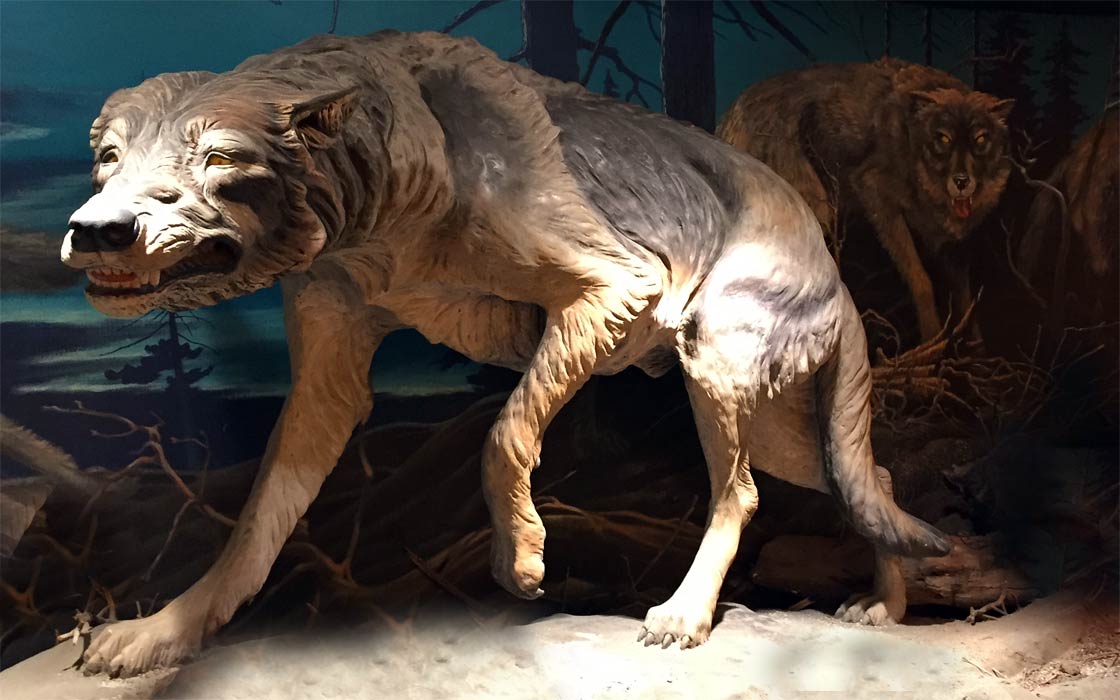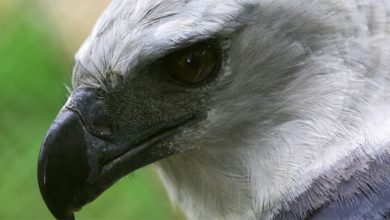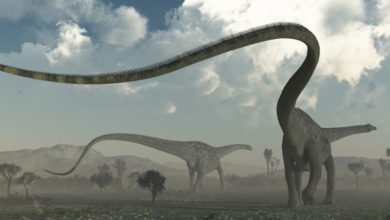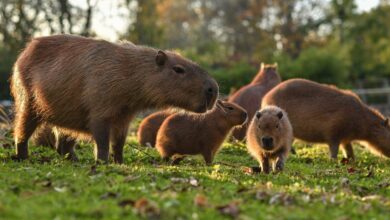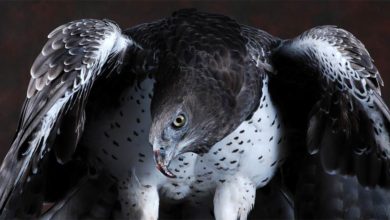Dire wolf (Aenocyon dirus / Canis dirus)
This large representative of the genus Canis / Aenocyon lived centuries ago in the areas of North and South America. It was a close relative of the gray wolf, with which it formed one ecological niche at one point. It was a strong and dangerous predator, but not indestructible. This is evidenced by the fact that today we will not meet it anywhere else outside the museum.
Classification
- Kingdom: Animalia
- Phylum: Chordata
- Class: Mammalia
- Order: Carnivora
- Family: Canidae
- Subfamily: Caninae
- Tribe: Canini
- Subtribe: Canina
- Genus: †Aenocyon
- Species: †Aenocyon dirus
- Subspecies:
- †Aenocyon dirus dirus
- †Aenocyon dirus guildayi
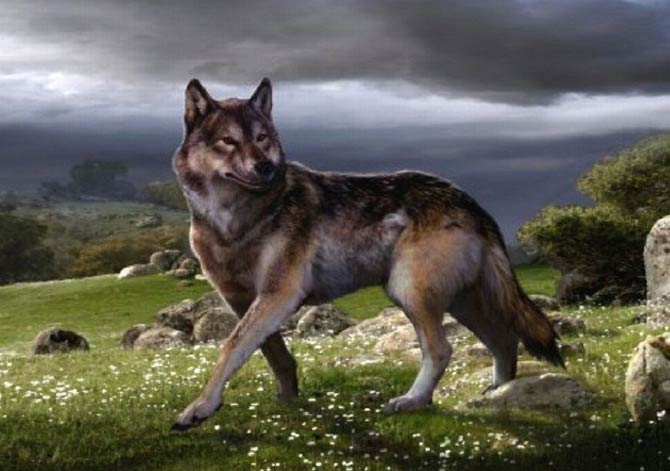
Aenocyon dirus has several synonyms:
- Aenocyon dirus nebrascensis
- Canis ayersi
- Canis dirus
- Canis indianensis
- Canis mississippiensis
- Canis nehringi
- Canis primaevus
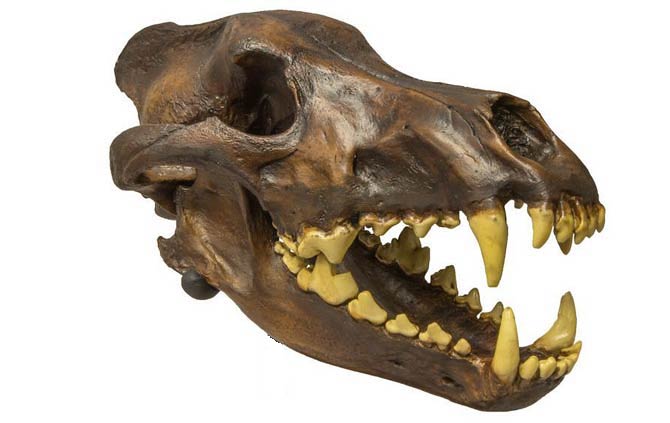
Occurrence and dating
Originally it was found in North America, but with time it spread to South America. It is believed to have lived from the Late Pleistocene to early Holocene (125,000–9,500 years ago), during the reign of large carnivores and herbivores.
The dire wolf lived in a variety of habitats. In North America, these were grasslands, plains and forested mountain areas, in South America, dry savannas.
Based on the remains found in the area from the province of Alberta (Canada) to the city of Tarija (Bolivia), it was established that the dire wolf occupied altitudes from sea level to 2,255 meters above sea level. It is also possible that he migrated to the northern parts of Canada, but the remains and other traces there may have been destroyed by glacial activity.

Anatomy
It was about 1.5 meters (59 in) long and weighed 50-79 kg (110 – 174 lb). However, due to the specific structure of the limbs of individuals found in the asphalt lakes of Rancho La Brea, it is difficult to compare the sizes of dire wolves from different populations.
It is only estimated that it was about 8% shorter than the Canadian timber wolf (Canis lupus occidentalis), but as tall as the average gray wolf (Canis lupus), although stronger than it. It also seems that there was no marked sexual dimorphism within the species, although in some debris clusters male tusks were much larger than female tusks. It is therefore believed that in groups where males had smaller fangs, there was no aggressive competition for females, while in male herds with large fangs, there could be acts of aggression against this background.
Despite the great similarity to the gray wolf, both species differed significantly from each other in terms of genetics, which resulted in morphological differences. Today’s largest gray wolves were similar in size to average dire wolves, and the largest representatives of the Canis dirus were much larger than today’s Eurasian relatives.
It is estimated that the dire wolf was heavier than the modern Canis lupus by approx. 25%. Greater mass and a more muscular body were adapted to fighting and hunting animals of the Pleistocene megafauna. The limbs, therefore, had to be proportionately shorter, but stronger than that of a gray wolf.
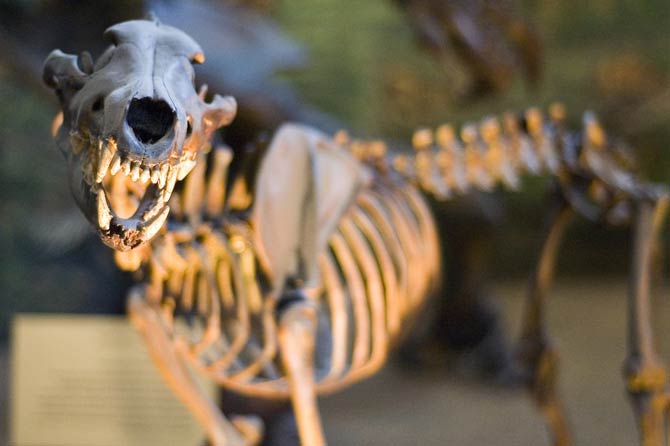
Teeth and diet
The teeth were similar to those of a gray wolf, although not much larger. Their structure indicates carnivore, but it is possible that this canine was omnivorous in a small percentage.
Dire wolf’s shearing teeth were larger than their modern relatives, and therefore could generate a stronger grip. This means that it could kill more efficiently and faster than the gray wolf. The wide zygomatic arches indicate the presence of large temporal muscles which contributed to the generation of strong bites.
Thanks to his large teeth and strong cranial muscles, it could therefore hold down and knock down large prey. Some scientists, however, found that the structure of muscles and skull was not much different from other canines, such as coyotes and lycaons. This would mean that the dire wolf pursued a diet and hunting strategy similar to them.
A strong skull suggests that it was hunting large prey or feeding on carrion. It seems, however, that the teeth were less suited to breaking bones than that of the gray wolf. It likely fed on wild horses († Equus occidentali), bison, sometimes mastodons, and giant ground sloths. Smaller prey was not very nutritious for him, so he avoided it rather. The extinction of the powerful herbivores that formed the basis of his diet, and the resulting compulsion to eat small animals, contributed significantly to the extinction of the species.

Lifestyle
Based on the bones found, it was shown that the dire wolf could travel in large herds. However, he was not one of the specialized hunters – it could hunt animals that were the most numerous in a given place and time.
In many of the remains found, tooth fractures that occurred during the life of the animal were observed. So it is possible that older animals wore them down faster or were not designed to eat hard foods such as bones or carrion. It is also possible that the fractures and cracks in the teeth were the result of stiff competition between various carnivores. This would force the dire wolves to eat food as much and as quickly as possible.
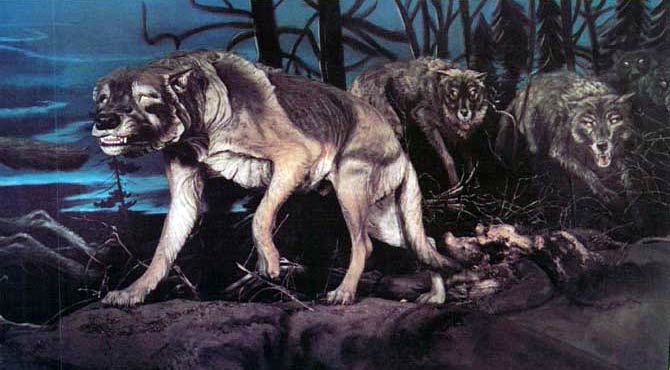
Extinction
The dire wolf became extinct around 10,000 years ago along with other representatives of the North American Pleistocene megafauna.
About 300,000 years ago, the gray wolf crossed the Bering land bridge and began competing with the dire wolf for territory and food. The nearly identical ecological niche that the two species filled, the end of the last ice age about 16,000 years ago and the arrival of humans to North America were probably the main reasons for the extinction of the Canis dirus species.
It is suspected that one of the main reasons for the extinction of the dire wolf was also climate change and human activity. However, there is not enough information to support these hypotheses. In addition, the biogeographic range, population size, level of competition and interaction with other animals are not known to date. So far, there is no unequivocal answer to the question why the dire wolf became extinct.
Proposed Reclassification
DNA research conducted in 2021 by scientists from the University of Adelaide revealed that dire wolves were so different from other canid species, such as coyotes and grey wolves (Canis lupus), that they could not interbreed. Previous analyses, based solely on morphology, had led scientists to believe that dire wolves were closely related to grey wolves.
An international team sequenced the DNA from five dire wolf fossils from Wyoming, Idaho, Ohio, and Tennessee, dated to over 50,000 years old. Their analyses showed that dire wolves and grey wolves were, in fact, very distant cousins.
As a result of their research, the team suggested that the distinct evolutionary divergence of dire wolves from grey wolves justifies placing them in a completely different genus – Aenocyon (resulting in the species name Aenocyon dirus, meaning ‘terrible wolf’) – first proposed by paleontologist John Campbell Merriam over 100 years ago.

Bringing the Dire Wolf Back to Life
In 2025, the biotechnology company Colossal Biosciences announced a groundbreaking success: the birth of three genetically modified canid puppies, which – according to the company – represent the first successful “resurrection” of an extinct species. The species in question is the Dire Wolf (Aenocyon dirus), which disappeared 10,000 years ago and, thanks to pop culture – particularly the series Game of Thrones – has become a symbol of prehistoric wildness. The announcement caused a media storm; headlines trumpeted the return of the Pleistocene apex predator.
We write about this topic in more detail in the comprehensive article “Have scientists truly brought the Dire Wolf (Aenocyon dirus) back to life?” We explain whether the “cloning” of the Dire Wolf was actually achieved.
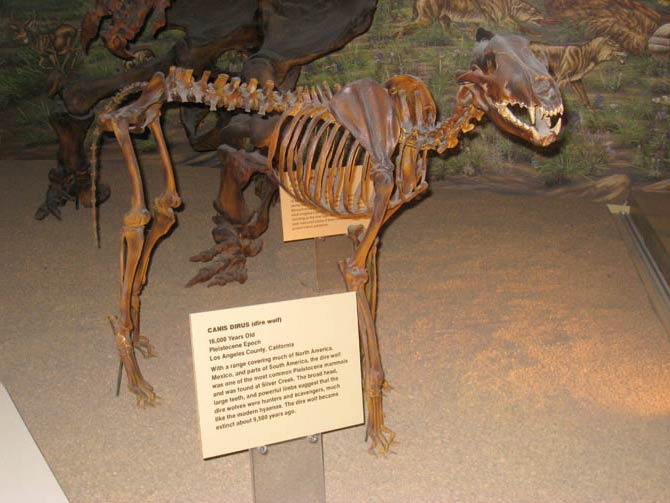
Detailed data / dimensions (size)
Dire wolf (Aenocyon dirus / Canis dirus)
- Temporal range: 125,000–9,500 years ago
- Body length: 1.2-1.5 m (47 – 59 in); gray wolf approx. 1-1.3 m (39 – 51 in)
- Height at the withers: 80 cm (31.5 in); gray wolf 60-85 cm (23 – 33.5 in)
- Weight: 49-79 kg (108 – 174 lb); gray wolf: 30-60 kg (66 – 132 lb)
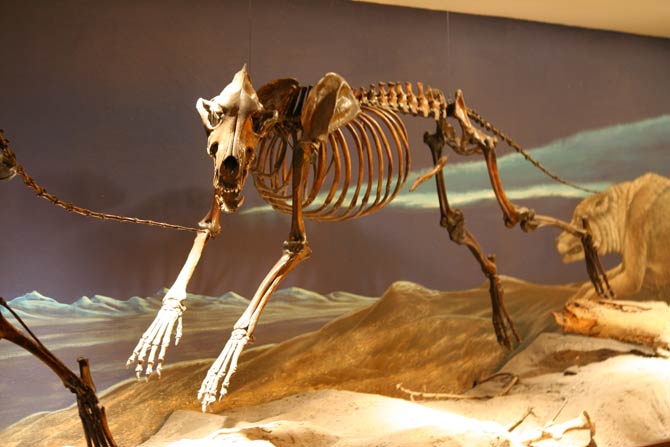
Dire wolf – interesting facts
- The scientific name Canis (Aenocyon) dirus means “scary / terrifying dog”.
- Most of the remains of a dire wolf were found in the asphalt lakes of Rancho La Brea, California. About 200,000 bone fragments belonging to over 4,000 individuals were discovered there.
- The dire wolf is one of the largest known representatives of the genus Canis.
- The bite of the dire wolf was about 129% stronger than the bite of modern gray wolves.
- The oldest dire wolf fossils found are dated 252,000 years ago.
- While the dire wolf is closely related to the gray wolf, it is probably not the ancestor of any modern canine.
- A DNA (2021) study found the dire wolf was a highly divergent lineage when compared with the extant wolf-like canines, and this finding is consistent with the previously proposed taxonomic classification of the dire wolf as genus Aenocyon.
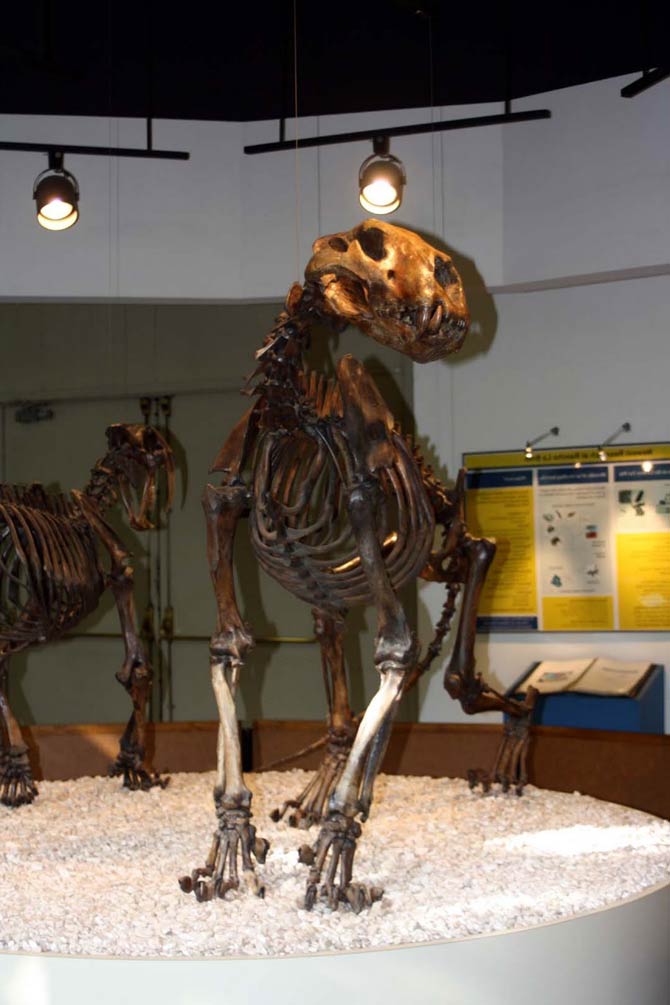
Recommended
- How Science Brought Back Dire Wolf
- Megafauna
- Mammoth
- Stegodon
- Mastodon
- Platybelodon
- Indricotherium
- Cave bear
- Short-faced bear
- American lion
- European cave lion
- Smilodon – Saber-toothed tiger

